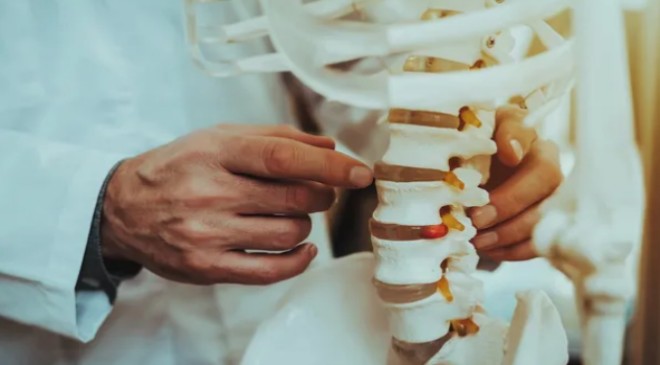Your bones may lose density and become fragile as you age. Here are two conditions that can weaken your bones apart from osteoporosis. Know signs and symptoms.
As we age and body processes slow down, our bones bear the brunt of the loss of bone density and dwindling nutrient absorpotion. As a result by the time you reach 40s, your bones may start showing signs of wear and tear as they start to lose calcium, minerals and density. As you get older, the strength of the bone tissue may start to decrease. Bone is a living tissue and is constantly being broken down and replaced. Osteoporosis occurs when the creation of new bones is exceeded by the loss of old bone. In this condition, you may experience back pain, a stooped posture, loss of height and a bone that’s broken easily. However, your bone health may deteriorate even without osteoporosis. In fact, your bones may weaken even without symptoms, and this is not detected until you go for a bone mineral density test (BMD).
Read More: Hypothyroidism: 5 Home Remedies To Reduce Thyroid Symptoms In Winters
Weak bones due to osteopenia or osteomalacia
The two conditions that can weaken your bones apart from osteoporosis are osteopenia and osteomalacia. They may or may not show up symptoms.
“Not everyone with osteopenia develops osteoporosis, but it can happen. Upto 70% of individuals with osteomalacia have low bone density, which could be categorized as osteoporosis. Osteopenia is a loss of bone mineral density (BMD). Lower BMD indicates bones are weaker than usual. Osteomalacia means ‘soft bones.’ Osteomalacia is a disease that weakens bones and can cause them to break more easily. It is a disorder of decreased mineralization, which results in bone breaking down faster than it can re-form,” says Dr Amite Pankaj Aggarwal, Director & HOD, Department of Orthopaedics & Joint Replacement Surgery, Fortis Hospital Shalimar Bagh.
Dr Aggarwal suggests a bone density test to determine whether you have osteopenia or osteoporosis. He however adds that it cannot determine osteomalacia.
Read More: Primary liver cancer: Causes, symptoms and risk factors of this tumour
Symptoms of osteopenia and osteomalacia
Osteopenia usually causes no symptoms. When osteopenia does cause symptoms, they may include localized bone pain and weakness in an area of a previous bone fracture.
The most common symptoms of osteomalacia as explained by Dr Aggarwal are:
- Pain in the bones and hips
- Bone fractures
- Muscle weakness. Patients can also have difficulty walking.
How to diagnose osteopenia
“To check for osteopenia the main way to determine your bone density is to have a painless, non-invasive test called dual-energy x-ray absorptiometry (DXA) that measures the mineral content of bone,” says the expert.
Some things can make bone loss happen more quickly, leading to osteopenia are:
- Medical conditions such as hyperthyroidism.
- Medications for cancer, heartburn, high blood pressure and seizures.
- Hormonal changes.
- Poor nutrition, especially a diet too low in calcium or vitamin D.
- Surgery on the gastrointestinal system, which can affect the body’s ability to absorb needed nutrients and minerals.
- Unhealthy lifestyle choices, such as smoking, drinking too much alcohol or caffeine, and not exercising.
Read More: Dark chocolate for heart to blueberries for brain: Benefits of antioxidant rich foods
Treatment
Treatment involves simple strategies to keep your bones as healthy and strong as possible and prevent progression to osteoporosis:
- Calcium treatment
- Exercise
- Healthy diet.
- Supplements for Vitamin D deficiency and exposure to the sun to help your body absorb vitamin D.
“Osteomalacia develops most commonly due to vitamin D deficiency, or less frequently, due to a digestive or kidney disorder. Vitamin D is essential for calcium absorption and for maintaining bone health. These disorders can interfere with the body’s ability to absorb vitamins patients who have osteomalacia can take vitamin D, calcium or phosphate supplements, depending on the individual case. For instance, people with intestinal malabsorption may need to take larger quantities of Vitamin D and calcium,” concludes Dr Aggarwal.





































